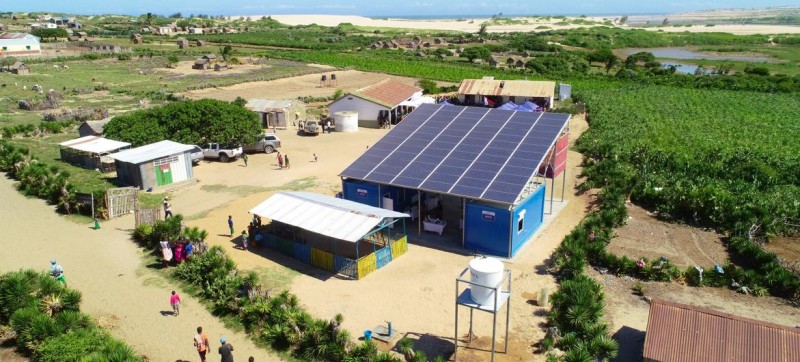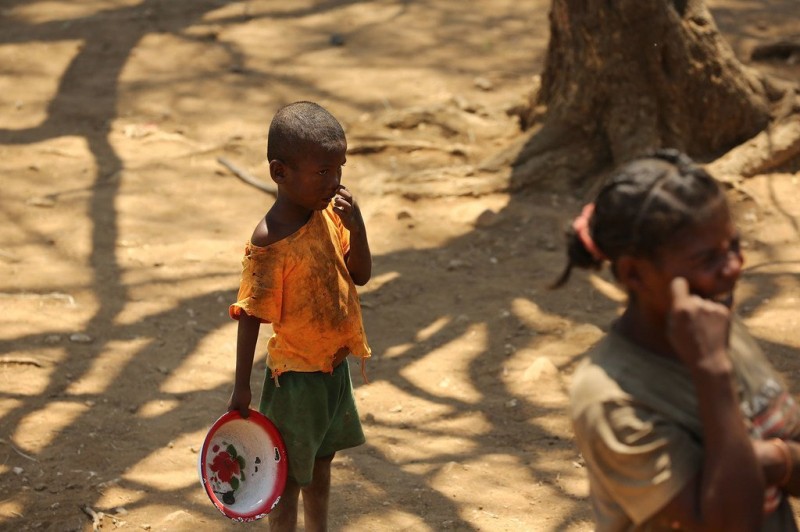
© WFP Madagascar WFP and government of Madagascar join hands to transform rural communities in Androy and Anosy regions.
Focusing on remote Androy and Anosy regions – some four hours’ drive from the capital, Antananarivo – WFP’s Rapid Rural Transformation initiative delivers solar-powered hubs, a sustainable water source and digital health check-ups, in partnership with the Government.
The benefits for communities are multiple and welcome: energy, water and digital platforms, all provided in an environmentally responsible and sustainable manner, the UN agency said.
Tweet URL
Boosting empowerment
Equally important, the project seeks to stimulate grassroots development, while addressing rural communities’ most pressing needs. If successful, WFP plans to take the idea to other villages and regions.
“With this pilot project, we will facilitate rural transformation even in geographically isolated areas, through the provision of clean water for irrigation, the operation of healthcare facilities, the expansion of entrepreneurial opportunities, and the development of their agricultural value chains,” said Jocelyn Raharimbola, Governor of Anosy region.
“Following years of food insecurity, data on the ground shows an improvement in the nutritional situation thanks to emergency interventions and collaboration with agencies such as WFP.”
The initiative is managed by regional authorities and allows partners to offer additional services including entrepreneurial training for women and younger members of the community.
Classes are available online on sustainability, business skills and farming, which is enhanced by easily installed solar-powered drip irrigation and hydroponics systems. The programme’s environmentally responsible and sustainable approach is a “game-changer”, maintained Tomson Phiri, WFP Regional Communications Lead and Spokesperson for Southern Africa.
Abundant sun
“If there is anything that the people in the south have, it is the abundance sunlight; it is hot, it is dry…we are establishing solar powered hubs that will provide a sustainable water source to the sites that I visited, we’ve introduced ICT (Information Communications Technology) in these remote areas.”
Mr. Phiri, speaking via Zoom from the capital, Antananarivo, told journalists in Geneva that Madagascar said while it was cyclone season in the north, the south was experiencing near-drought conditions.
Food insecurity remains an ever-present threat, the WFP spokesperson continued, with 2.2 million people in the southern and southeastern regions of Madagascar facing high levels of food insecurity during the pre-harvest period between now and April 2023.

WFP/Tsiory Andriantsoarana The combined effects of the drought, COVID-19 and the insecurity upsurge have undermined the already fragile food security and nutrition situation of the population of southern Madagascar.
Unenviable record
Madagascar is among the 10 countries most vulnerable to disasters in the world and is considered the most cyclone-exposed country in Africa, according to WFP.
The UN agency added that Androy and Anosy regions are at the sharp end of the climate crisis and have high rates of chronic malnutrition among children under five.
The Rapid Rural Transformation (RRT) initiative combines two climate risk mitigation strategies to assist people: better natural resource management through enhanced agricultural techniques to protect food production and diversifying their livelihoods to withstand climate shocks.
The UN WFP is the world’s largest humanitarian organization saving lives in emergencies and using food assistance to build a pathway to peace, stability and prosperity for people recovering from conflict, disasters, and the impact of climate change.

